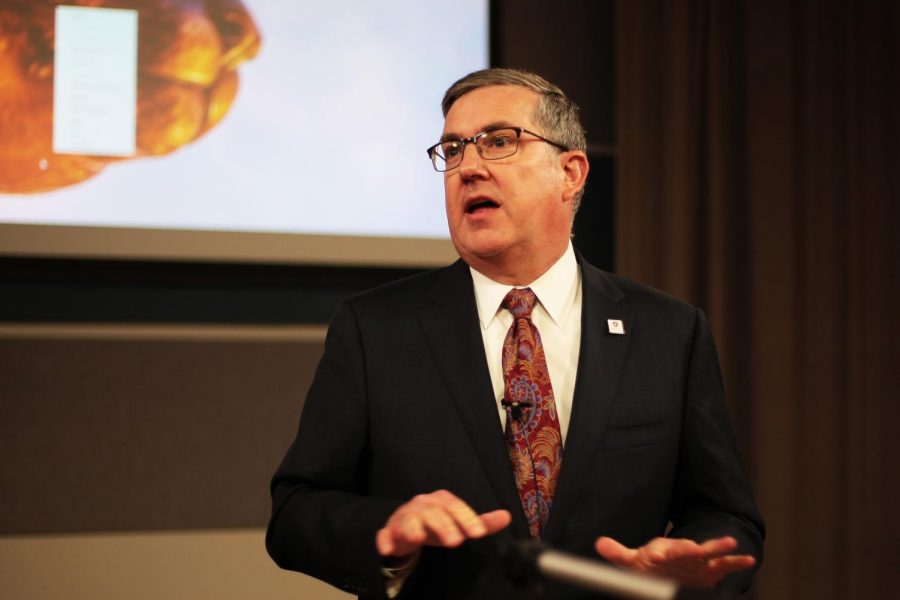Faculty, staff told to prepare for 10 percent budget cut
About $37 million reduction expected; cuts may occur in multiple rounds
BEN SCHUH | DAILY EVERGREEN FILE
WSU President Kirk Schulz sent an email to faculty and staff instructing them to prepare for budget cuts across each unit and department.
May 20, 2020
WSU president Kirk Schulz sent an email on Tuesday to faculty and staff stating that each unit or department should prepare for a 10 percent budget cut.
Phil Weiler, vice president for marketing and communication, said this is in response to direction from Gov. Jay Inslee who said each state agency should prepare for a 15 percent budget cut due to loss of revenue from COVID-19. So far, this is just an exercise in preparation for later cuts.
Budget cuts have not occurred yet because university officials are awaiting further direction from the governor’s office. Each unit head is expected to submit a budget reduction proposal to Schulz, Weiler said.
WSU is funded both by state money and student tuition, so a 15 percent cut to state funding will approximately equal 10 percent of WSU’s total funding, Weiler said. That would be about $37 million to $38 million.
“Fifteen percent is a pretty dramatic reduction in funding for any agency,” Weiler said.
Those cuts, when they come, will be made across the board, he said, so not just one department will be affected. There may also be more than one round of cuts, depending on the economic situation in the state.
“If the resulting economic carnage is short-lived … that’s great,” Weiler said. “But, if, for some reason, it takes many months for tax revenues to rebound, we could very well see ourselves being at this point again in the future.”
Activities and programs that promote student learning, specifically ones that benefit disadvantaged student populations, will see fewer cuts, Weiler said.
Student employees may be affected depending on what unit they are employed in, he said.
Officials are working to minimize cuts to lower-earning faculty and staff, according to the email.
Faculty and staff should prepare to increase enrollment and retention rates, according to the email. This is because tuition money makes up part of WSU’s funding and could fill in the gap left by decreased state funding.










